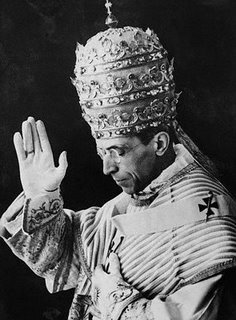
Den 3. september 1958, på festen for pave Pius X (i den gamle kalenderen), offentliggjorde liturgikommisjonen en instruks om messens liturgi og musikk som vi gjerne må lese mer i vår tid.
Denne innstruksen fullfører den fine rekken av pavelige dokumenter om liturgien som begynte i 1903, med Motu proprioet Inter sollicitudines of St. Pius X (22/11 1903); the Apostolic Constitution Divini cultus of Pius XI (Dec. 20, 1928); and the encyclical Musicæ sacræ disciplina of the Ven. Pius XII (Dec. 25, 1955). It also embodies much of the teaching of Mediator Dei (November 20, 1947), Pope Pius XII’s great encyclical on the Sacred Liturgy.
It remains until today the guiding document on sacred music for communities and the faithful attached to the Gregorian Rite. Furthermore, all Catholics — even those who serve or worship exclusively in the context of the Novus Ordo — would do well to study this document and think with it, given that it embodies the general principles of sacred music as set forth by the Magisterium.
Her kan vi lese om ulike typer musikk:
5. Gregorian chant, which is used in liturgical ceremonies, is the sacred music proper to the Roman Church; it is to be found in the liturgical books approved by the Holy See. This music has been reverently, and faithfully fostered, and developed from most ancient, and venerable traditions; and even in recent times new chants have been composed in the style of this tradition.
This style of music has no need of organ or other instrumental accompaniment.
6. Sacred polyphony is measured music which arose from the tradition of Gregorian chant. It is choral music written in many voice-parts, and sung without instrumental accompaniment. It began to flourish in the Latin Church in the Middle Ages, and reached its height in the art of Giovanni Pierluigi Palestrina (1524-1594) in the latter half of the sixteenth century; distinguished musicians of our time still cultivate this
art.
7. Modern sacred music is likewise sung in many voice-parts, but at times with instrumental accompaniment. Its composition is of more recent date, and in a more advanced style, developed from the previous centuries. When this music is composed specifically for liturgical use it must be animated by a spirit of devotion, and piety; only on this condition can it be admitted as suitable accompaniment for these services.
8. Sacred music for organ is music composed for the organ alone. Ever since the pipe organ came into use this music has been widely cultivated by famous masters of the art. If such music complies with the laws for sacred music, it is an important contribution to the beauty of the sacred liturgy.
…
10. Religious music is any music which, either by the intention of the composer or by the subjector purpose of the composition, serves to arouse devotion, and religious sentiments. Such music»is an effective aid to religion» (Musicæ sacræ disciplina, idem.). But since it was not intended for divine worship, and was composed in a free style, it is not to be used during liturgical ceremonies.
